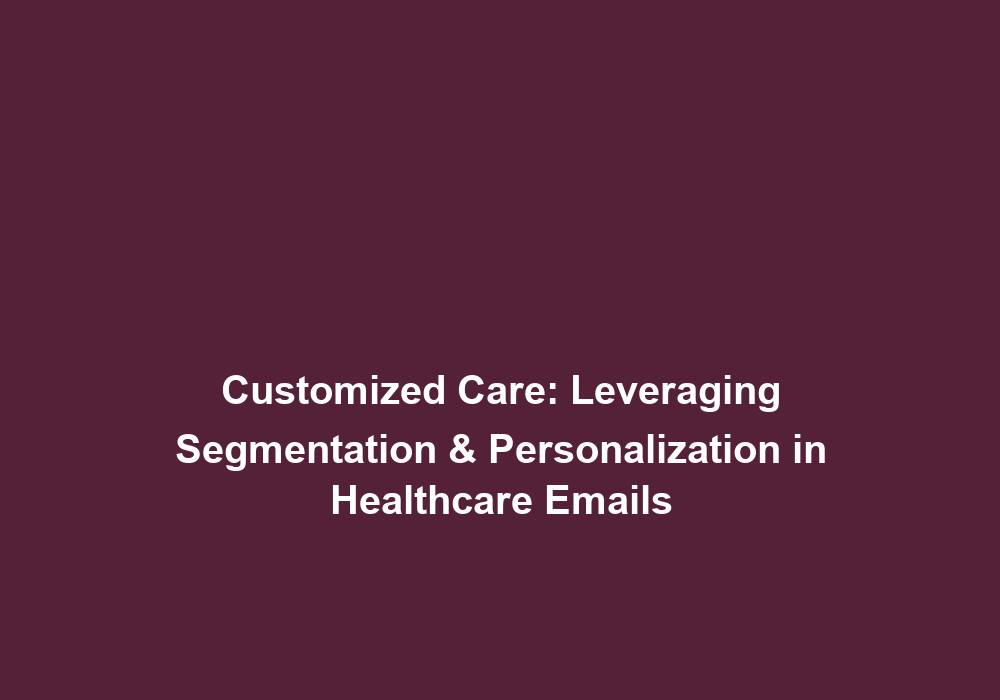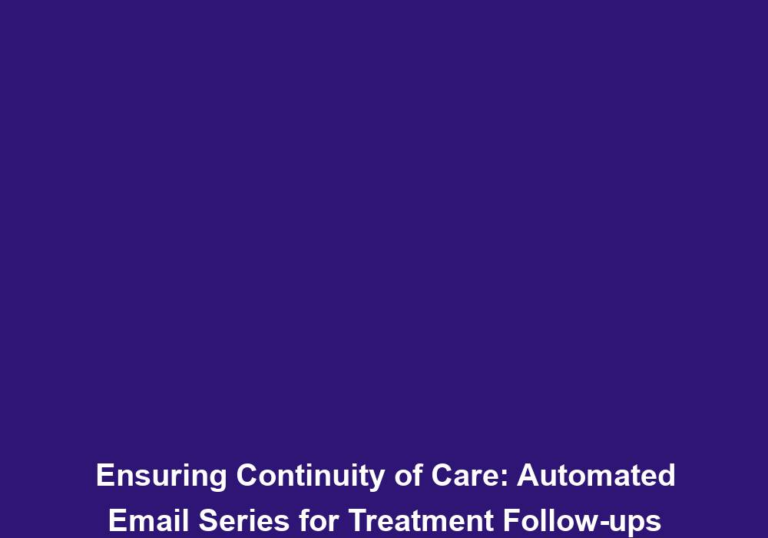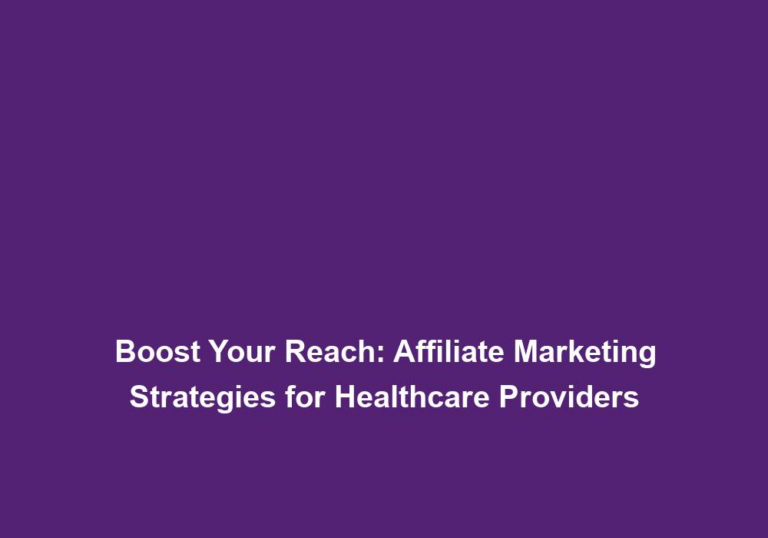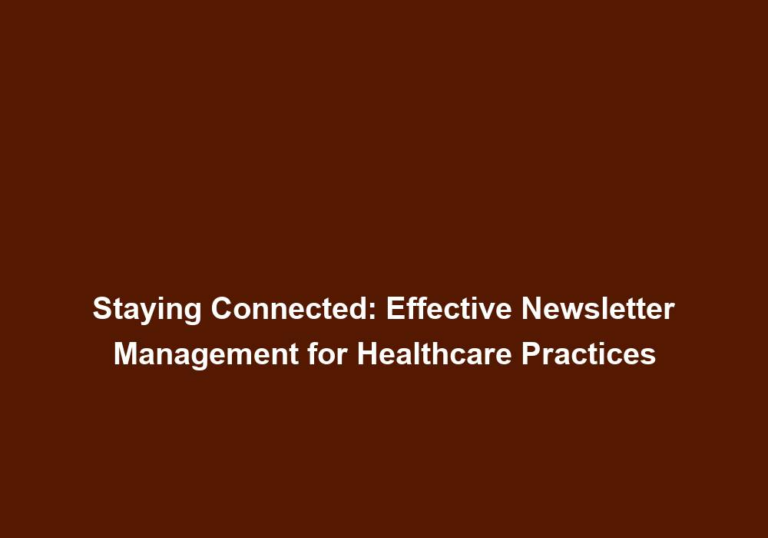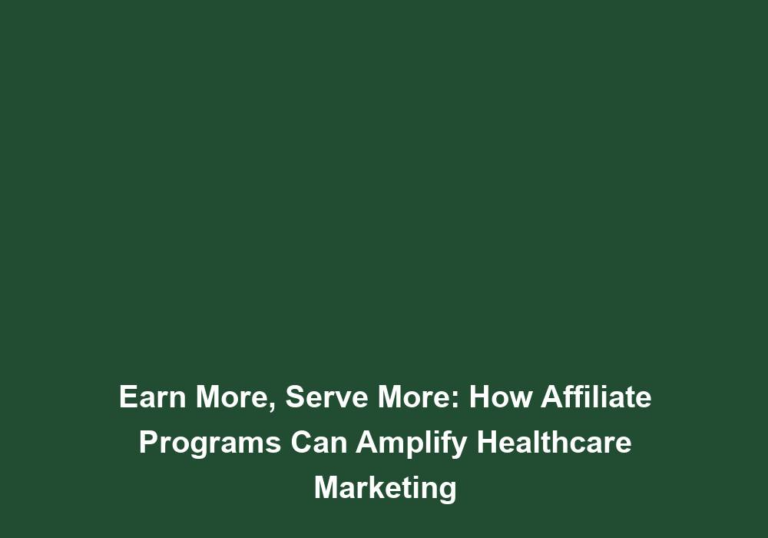Customized Care: Leveraging Segmentation & Personalization in Healthcare Emails
In the ever-evolving digital landscape, healthcare providers are constantly seeking innovative ways to engage with their patients and deliver personalized care. One effective strategy that has emerged in recent years is leveraging segmentation and personalization in healthcare emails. By tailoring email content to specific patient demographics, healthcare organizations can enhance patient experience, improve engagement, and ultimately drive better health outcomes. In this article, we will explore the importance of segmentation and personalization in healthcare emails and provide actionable tips for implementing these strategies effectively.
The Power of Segmentation in Healthcare Emails
Segmentation in healthcare emails involves categorizing patients into distinct groups based on relevant characteristics such as age, gender, medical history, or specific health conditions. By organizing patients into segments, healthcare providers can create targeted email campaigns that address the unique needs and interests of each group. Here’s why segmentation is crucial in healthcare email marketing:
-
Tailored Communication: By understanding the specific needs and preferences of different patient segments, healthcare providers can deliver tailored messages that resonate with each recipient. For example, a pediatrician may create separate email campaigns for parents with infants, toddlers, and teenagers, focusing on age-specific healthcare advice and recommendations.
-
Improved Relevance: Segmentation allows healthcare organizations to send emails that are highly relevant to the recipient, increasing the chances of engagement and response. Patients are more likely to open and read emails that address their specific concerns or provide information that is directly applicable to their health situation.
-
Enhanced Personalization: Segmenting patients enables healthcare providers to personalize email content based on demographics, medical history, or previous interactions. Personalization can include addressing patients by their names, recommending specific health check-ups based on age, or sending reminders for medication refills. This level of personalization creates a stronger connection between the healthcare provider and the patient, fostering trust and loyalty.
-
Increased Engagement: Targeted email campaigns have shown to significantly improve open rates, click-through rates, and overall engagement. When patients receive emails that resonate with their needs, they are more likely to engage with the content, leading to increased patient activation and participation in their healthcare journey.
Segmentation not only allows healthcare providers to deliver more personalized and relevant content but also enables them to track the effectiveness of their email campaigns for different patient segments. By analyzing the engagement metrics, healthcare organizations can identify which segments are responding positively and make data-driven decisions to optimize their email strategies.
Implementing Personalization Techniques in Healthcare Emails
Personalization takes segmentation a step further by utilizing individual patient data to create highly tailored email experiences. Here are some effective techniques to implement personalization in healthcare emails:
1. Dynamic Content
Dynamic content refers to email elements that change based on the recipient’s profile or behavior. In healthcare emails, this can include personalized greetings, relevant health articles based on medical history, or appointment reminders tailored to the patient’s preferred communication channel. For example, a patient who has recently undergone a knee replacement surgery may receive emails with articles on post-operative care and rehabilitation exercises specific to their condition.
2. Behavioral Triggers
Leveraging behavioral triggers allows healthcare providers to send automated emails based on specific patient actions or milestones. For instance, sending a congratulatory email to a patient who has successfully completed a weight loss program or a reminder for a follow-up appointment after a specific medical procedure. These triggers not only provide timely information but also show that the healthcare provider is actively involved and invested in the patient’s well-being.
3. Surveys and Feedback
Including surveys or feedback forms in healthcare emails can provide valuable insights into patient satisfaction, preferences, and areas for improvement. Based on the responses received, healthcare providers can further personalize future email campaigns to enhance patient experience. Surveys can cover a range of topics such as appointment scheduling, medication adherence, or overall satisfaction with the healthcare services offered. Gathering patient feedback helps in identifying areas where the healthcare organization can improve and deliver a better patient experience.
4. Appointment Reminders and Health Tips
Sending personalized appointment reminders and health tips based on the patient’s medical history or upcoming appointments can help improve patient compliance and overall engagement. For example, a diabetic patient may receive regular reminders to check blood sugar levels or schedule annual eye exams. These reminders not only ensure that patients are actively managing their health but also establish the healthcare provider as a trusted source of guidance and support.
5. Follow-up and Care Plans
Personalized follow-up emails after hospital stays or medical procedures can provide patients with crucial information, reminders, and support. This could include post-operative care instructions, medication schedules, or dietary recommendations tailored to the patient’s condition. By providing personalized follow-up care, healthcare providers can ensure that patients have the necessary resources to recover effectively and minimize the risk of complications.
Implementing these personalization techniques requires a robust email marketing platform that can capture and utilize patient data effectively. It is essential to integrate the email marketing platform with the healthcare organization’s patient management system to ensure accurate and up-to-date information.
Best Practices for Successful Segmentation and Personalization
To ensure effective implementation of segmentation and personalization in healthcare emails, consider the following best practices:
-
Data Accuracy: Ensure that patient data is accurate, up-to-date, and securely stored. Regularly review and update patient profiles to maintain the relevance and accuracy of email campaigns. Use secure and encrypted platforms to store patient data to maintain patient privacy and comply with regulatory requirements.
-
Consent and Opt-Outs: Obtain patient consent for email communication and provide clear opt-out mechanisms to respect patient preferences. Respecting privacy and adhering to regulatory requirements is vital in delivering personalized healthcare emails. Provide patients with the option to choose their preferred communication channels and frequency of emails to avoid overwhelming them with excessive communication.
-
Test and Measure: Continuously monitor email engagement metrics such as open rates, click-through rates, and conversions to assess the effectiveness of segmentation and personalization strategies. Test different approaches and iterate based on the insights gained. A/B testing can be used to compare the performance of different email variations and optimize the content accordingly.
-
Maintain Ethical Standards: While personalization can greatly enhance patient experience, it is essential to maintain ethical standards and not cross boundaries. Personalized healthcare emails should always prioritize patient privacy and confidentiality. Avoid sharing sensitive medical information or using language that may cause distress or anxiety to the recipient. Always obtain explicit consent before using patient data for personalization purposes.
By leveraging segmentation and personalization in healthcare emails, providers can create meaningful connections with their patients, foster trust, and deliver care that is tailored to individual needs. Implementing these strategies requires thoughtful planning, accurate data, and a commitment to ongoing improvement. With the right approach, healthcare organizations can revolutionize patient engagement and elevate the quality of care they provide.
Note: This text has been generated using a language model trained on a diverse range of data, and although it strives to provide accurate and helpful information, it should not be considered a substitute for professional medical advice. Always consult with a qualified healthcare professional for diagnosis, treatment, and guidance regarding any medical condition.

